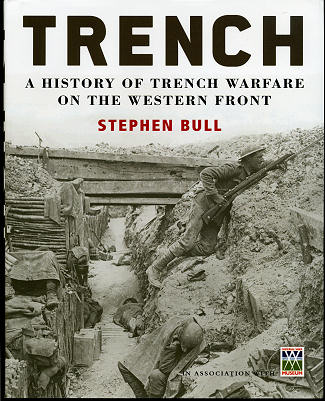 Probably one
of the most static wars ever fought by man was World War One. Why it was like
this has been and will be a topic that is discussed back and forth for years.
But for most of us, the iconic structure of these four years of killing was the
trench.
Probably one
of the most static wars ever fought by man was World War One. Why it was like
this has been and will be a topic that is discussed back and forth for years.
But for most of us, the iconic structure of these four years of killing was the
trench.
The trench isn't a new feature to war, as it is and will
be a staple of defensive positions for years to come. What was new was the size
and complexity of the trench systems used by both the Alliance and the Entente
on the Western Front. This feature was oddly absent or greatly reduced in both
the war with Russia and that in the Alps against the Italians. However on the
Western Front, it became almost a living thing, growing and spreading from the
English Channel to Switzerland.
So why were trenches so ubiquitous? Simply to allow the
defending soldiers an opportunity to survive. Nothing more
complex than that. They also served as a way to move around in hostile
territory, where just showing one's head could mean its removal by enemy
bullets. To overcome the trenches of the enemy, huge siege guns, tunneling to
set gigantic mines and the development of other weapons (gas, machine gun, tank)
was undertaken by both sides to some extent or the other. Eventually, the trench
was overcome and in the end it was freedom of movement that helped to determine
the victor.
In this book on the trench, author Stephen Bull relies
on four previous Osprey editions to help provide not only some material, but
also images and artwork to help illustrate this volume. But this isn't just a
rehash of those previous works as most of what is written is new to this volume.
Starting with the first trenches in late 1914 to prevent
the Germans from making an 'end run' through Belgium, there are sections on what
the trenches were like, how they were built, their function in attack and
defense as well as the new weapons and tactics required when fighting this type
of war. This also includes sections on gas, snipers, mining, the use of concrete
and the development and use of the tank.
All of this is superbly illustrated with period photos
and maps of various battles that are featured throughout the book.
It is a truly engrossing book that pulls in the reader
with its narrative and personal stories. It is a book I can most highly recommend to you and once you start to
read it, you'll find out why.
December 2010
For more on the complete line of Osprey books,
visit www.ospreypublishing.com
or contact them at Osprey Direct, PO Box 140, Wellingborough, Northants,
NN8 2FA, UK. In the US, it is
Osprey Direct at 44-02 23rd St, Suite 219, Long Island City, NY 11101., where you can
get a catalogue of available books.
If you would like your product reviewed fairly and quickly, please
contact
me or see other details in the Note to
Contributors.
 Probably one
of the most static wars ever fought by man was World War One. Why it was like
this has been and will be a topic that is discussed back and forth for years.
But for most of us, the iconic structure of these four years of killing was the
trench.
Probably one
of the most static wars ever fought by man was World War One. Why it was like
this has been and will be a topic that is discussed back and forth for years.
But for most of us, the iconic structure of these four years of killing was the
trench.